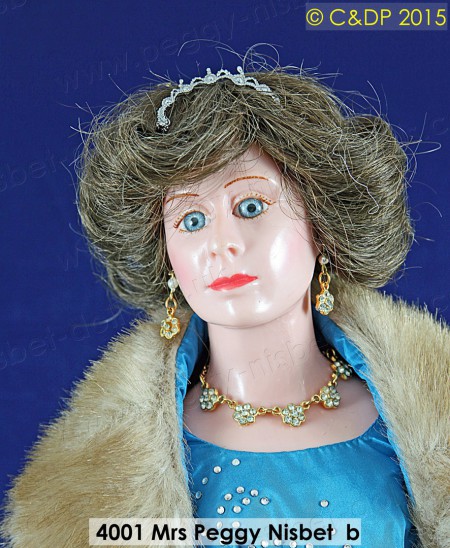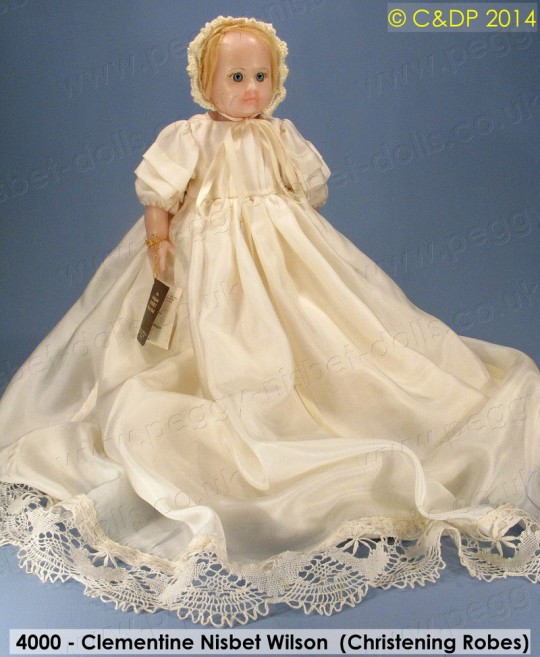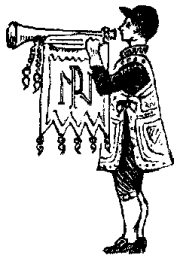Wax Dolls
The "1985 House of Nisbet Dolls, Bears & Books catalogue" tells us that doll historians regard the English as the originators of poured wax dolls, which at this time was an old industry that had virtually disappeared.
The House of Nisbet sought to revive this dying dollmakers' art, and the three models shown in this section are the result.
The poured wax components were made in the best traditions of antique wax dolls, and the House of Nisbet retained the services of doll historian and antique wax doll expert, Miss Faith Eaton, as a consultant on the project. In addition, Miss Caroline Goodfellow, Doll Curator of the Bethnal Green Museum of Childhood, (which is affiliated to the Victoria and Albert Museum in London), was on hand to offer valuable advice and guidance.
Only three wax dolls were produced by the House of Nisbet : They are listed below, in the order they were introduced, (not in numerical order!)
4001 - Mrs Peggy Nisbet
This eighteen inch portrait doll shows Mrs Peggy Nisbet, dressed in one of her formal gowns worn in the early 1950s, when she founded the company. It was the first of three poured wax dolls made by the House of Nisbet
This impressive doll was introduced in 1985, and went on sale for £98.00
(Apologies for these poor quality images of this stunning doll - we plan a re-shoot in the near future)
4000 - Clementine Nisbet Wilson
This doll, the second in the wax doll series, shows Alison and Jack Wilson's daughter Clementine as an infant, dressed in Christening Robes made of pure silks and cottons, and finished in genuine old hand-made laces and trimmings. Because of the difficulty in sourcing the old lace, no two costumes were identical
Issued in February 1985, Clementine went on sale for £98.00
4002 - Queen Victoria
This ten inch high wax portrait doll of Queen Victoria was issued in January 1986. She was the third, (and sadly, the last), poured wax doll made by the House of Nisbet, and sold for £69.00. She was larger than the the eight inch porcelain version made for the Tower Treasures collection ten years earlier, but was otherwise very similar in design. This doll was based on a portrait in the National Gallery








